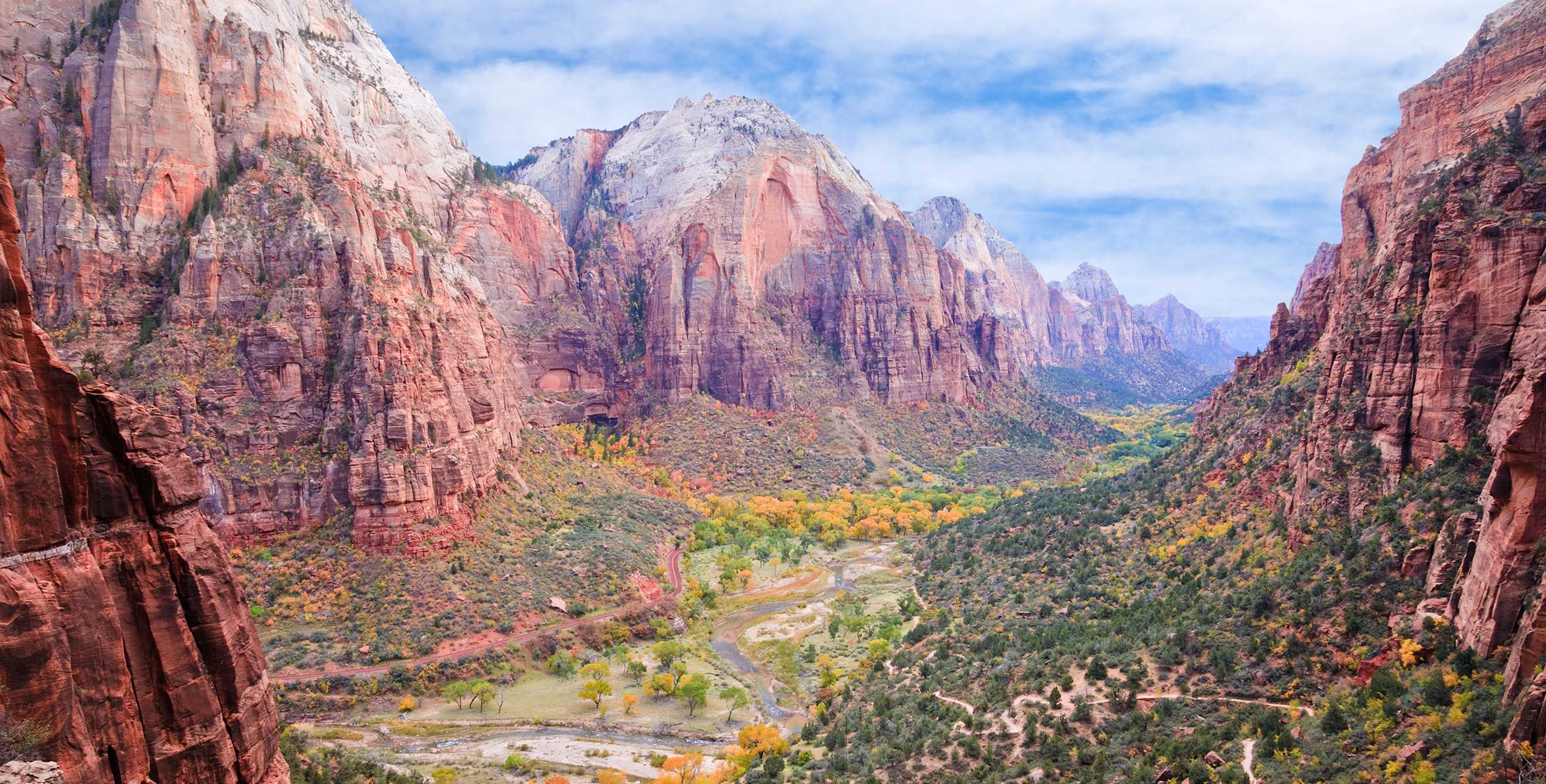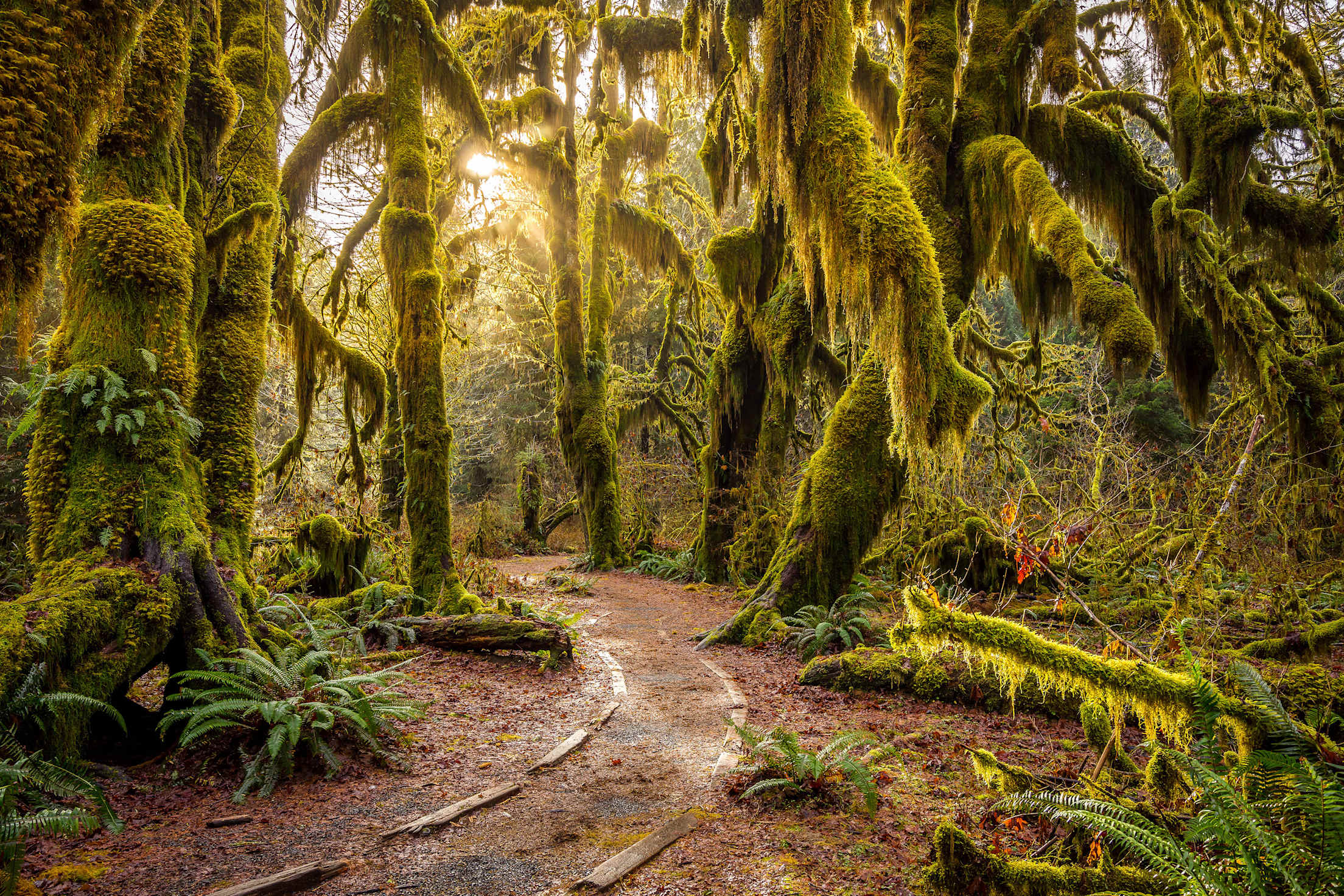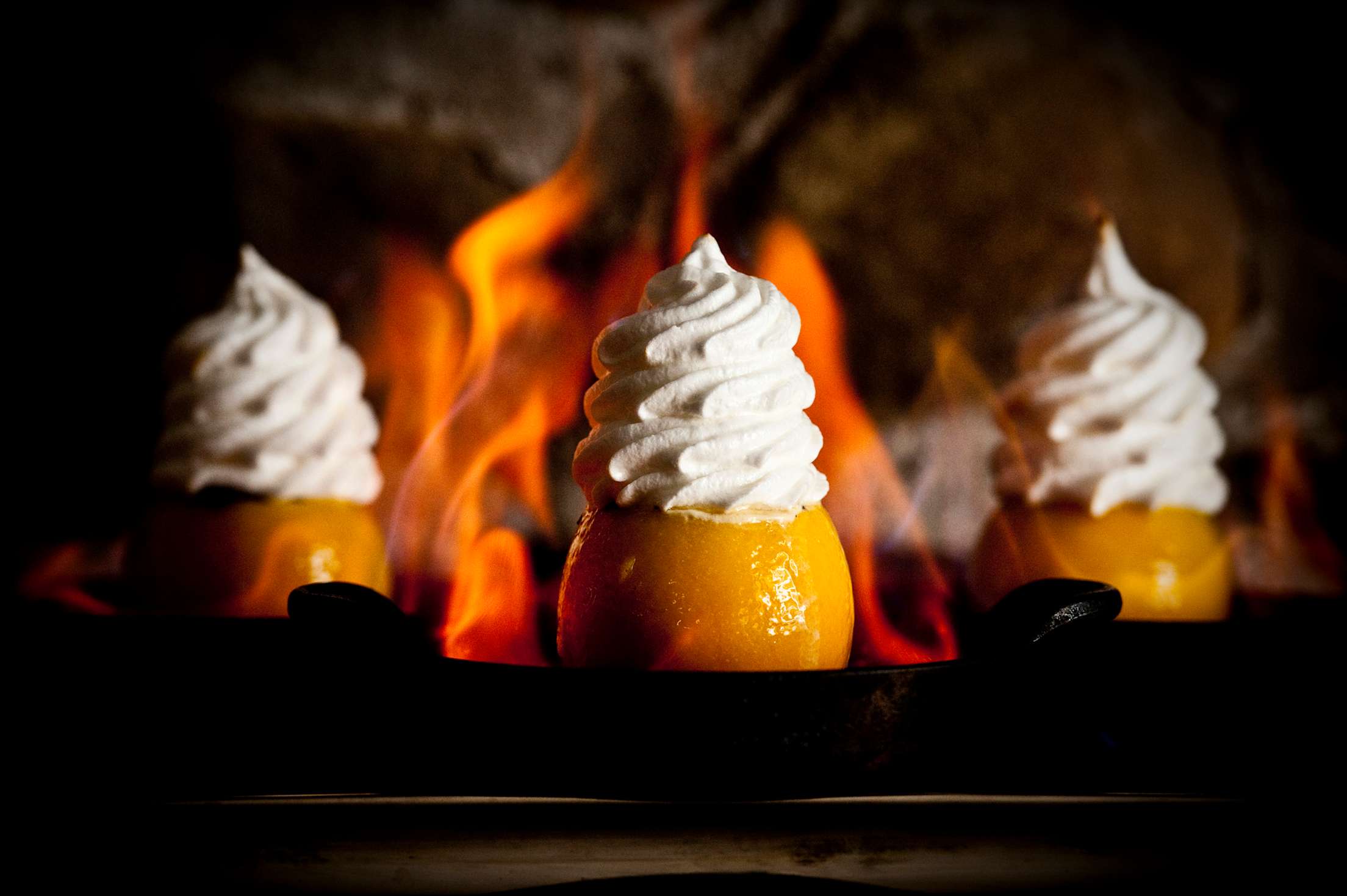
Visit These Popular National Parks in the Off Season Instead
Head to these national parks during the off-season to enjoy the trails all to yourself.

Want a national park all to yourself? Cooler weather signals the best time of year for quiet views and wide-open trails at three off-peak favorites.
Zion National Park, Utah
Mid-autumn brings cool air, solitude, and a little more freedom to this popular park. From late November to mid-February, you can drive your own car into Zion Canyon rather than taking the shuttle required in summer. Snow may already dust the tops of iconic towers such as Angels Landing and the Great White Throne, but the road should be bare and clear, and there is still plenty to do.
The easy Riverside Walk follows the bank of the Virgin River for a mile into the narrowing canyon beyond the end of the road. Here cottonwoods and bigtooth maples flicker with autumn colors that almost match the hues of lichens on the sheer sandstone walls. At the Temple of Sinawava, ephemeral waterfalls splash down the canyon walls, and the season's extra moisture adds to the show for anyone taking the trail behind the twin falls at the Lower Emerald Pool. The trails may be icy in spots, so step carefully. With views like this, why hurry?

Fall and winter's slower pace give you more time to wildlife watch.
Yellowstone National Park, Wyoming
You know it's late fall in the country's oldest national park when bison trot down the middle of the road like they own the place—and there isn't a traffic jam stretching away behind them. By November, the number of monthly guests drops from a July high of over 900,000 to the low five digits. Snow closes most of the roads, but not the plowed, 56-mile stretch from the north entrance near Gardiner, Montana, to the northeast entrance near Cooke City, Montana. And what a drive it is. Motorists stop to see steam curl into the air around the white and orange terraces at Mammoth Hot Springs, and to watch herds of elk and bison wade through the snow at Blacktail Deer Plateau and Lamar Valley.
By early November, snowmobiles and snow coaches return to other roads in the park, including the sections that connect West Yellowstone, Montana, and Mammoth Hot Springs to Old Faithful. Visitors quickly discover that Yellowstone is very much alive as winter sets in. Eagles and ravens ride the air, and wolf packs prowl. Early snows can be fickle—sparse and skimpy one week, deep and drifting the next. But no matter what, the scene is tranquil. The wildlife adapts to changing seasons, and visitors do the same.

Grab your coat and explore the moss-covered Hoh Rain Forest.
Olympic National Park, Washington
Cool November and December rains don't dampen the experience of the rain forests in Olympic National Park. "That's when you see what the forests are all about," says former park spokesperson Rainey McKenna. The season feeds the lush plants in the Hoh Valley, one of the wettest spots in the United States. While the giant canopy holds back most of the drops, enough water trickles down to keep the ground moist and the mosses, ferns, spruces, and firs flush in rich shades of green.
The deepening winter suits the wildlife as well. The rain forest rarely drops below 30 or 40 degrees, a gentle low for the peninsula's Roosevelt elk, who can graze the understory without having to dig through snow.
The valley's waterways also brim with action. The glacier-fed Hoh River and its tributaries attract spawning salmon. The park hosts 70 unique stocks of Pacific salmon and steelhead trout; look for returning red-flanked cohos (and the river otters that chase them) in Taft Creek near the Hoh Rain Forest Visitor Center. As many as 3,000 can crowd the spring-fed stream every year, while the park guests who watch tend to have its banks all to themselves.

The Flaming Orange, a classic dessert at the Chico Hot Springs Dining Room.
Where to Eat Near Each Park
Feed your appetite at stellar restaurants near each of the parks.
Thanks to a geothermal greenhouse, you can count on plenty of fresh produce year-round at the Chico Hot Springs Dining Room in Pray, Montana, 30 miles away from Yellowstone's north entrance. That includes the lettuce in the house salad and the chopped veggies that are served alongside the apple wood–smoked rainbow trout. The flaming chocolate orange dessert stops the show.
The star of the Zion dining scene just might be Porter's Smokehouse and Grill, a Springdale, Utah, spot where the big burgers, big steaks, and baby-back ribs satisfy the heftiest of appetites.
Family favorites get a foodie upgrade outside Olympic at The 929 Wood Fired Grill in Port Angeles, Washington, where top choices include Dungeness crab mac and cheese, and the cedar-plank platter of Alaskan halibut, salmon, scallops, prawns, and clams in a buttery lemon–white wine sauce.